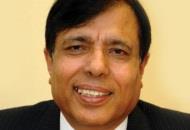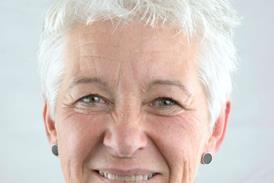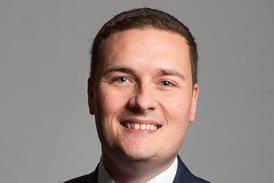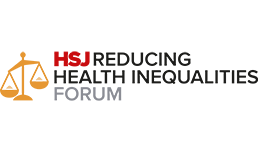People seeking medical treatment for lifestyle problems has got out of hand. Often they prevent people from making long term changes to their lifestyle. More must be done to educate patients on their options, argues Kailash Chand
Health services around the globe have seen a growing trend of medicalisation – best defined as when professionals and the public seek medical treatment for lifestyle problems.
Some authors refer to this as over-medicalisation, which in my view is an unnecessary exaggeration of an already undesirable consequence of western medicine.
The UK has witnessed:
- increased use of medicines;
- unwarranted medical tests;
- rising hospitalisation rates;
- swamped GP surgeries and emergency departments;
- unnecessary interventions such as caesarean sections, have become the norm; and
- other surgical procedures, some potentially life threatening such as inserting stents, have become routine.
In a resource challenged NHS, medicalisation – let alone over-medicalisation – is now one of the greatest threats to the sustainability of universal healthcare model.
- GPs feel pressured over antibiotics
- Clinical leaders: Pharma on the front line
- Only a whole culture change can make self-care a reality
The reasons why
Independent health commentators have identified the factors that drive this trend. These include:
- the culture of “more medical intervention is better”;
- the slavish use of medical technology even when it is not necessary;
- defensive medicine or “playing it safe” by prescribing additional tests or treatment;
- failure to counsel patients adequately about the risks and benefits of treatment and the other options available;
- aggressive marketing of services by pharmaceutical firms and medical devices industry;
- incentives inherent in the way providers are paid for their services (payment by results); and
- the growing demand by patients for medical interventions.
And the list of factors is always growing to include things like excessive use of antibiotics, imaging for non-sinister low backaches, having surgery when watchful waiting would be better and unwanted intensive care for end of life patients who would prefer hospice or home care.
Bad medicine
There are several thousand elderly admissions every year in the UK due to adverse drug reactions.
The problem is magnified by polypharmacy: up to 40 per cent of elderly patients are taking unnecessary medication, and about half the elderly take five or more medications.
The most perverse incentives exist in the prescribing of drugs. There are well publicised examples of these such as the sheer waste of millions of taxpayer funds on the overhyped importance and stockpiling of the Tamiflu vaccine.
And there is the irrational use of antidepressants and sedatives, which has been spiralling out of control over last two decades.
Sadly, just as we are medicalising depression, so too are we over emphasising the role of cholesterol in heart attacks. Three-quarters of people having a first heart attack, for instance, have normal cholesterol levels.
According to the World Health Organization, 80 per cent of cardiovascular disease is caused by smoking, inactivity, unhealthy diet and other lifestyle factors.

‘An estimated 12 million people in the UK will end up on one statin or another’
At present, it is estimated that about 7 million people in the UK take statins to lower cholesterol in the blood.
The new National Institute for Health and Care Excellence guidance will now broaden the scope of statins in primary prevention - preventing cardiovascular disease in people who have not been diagnosed, resulting in an estimated 12 million people in the UK will end up on one statin or another.
This is a statistical scandal because nearly a quarter of the population will be taking a statin if the guidance is strictly adhered to.
This is just bad medicine.
Statins give the illusion of protection to many people who would be much better served by doing more exercise, cutting out smoking, reducing alcohol intake and eating a Mediterranean diet.
Medicalisation has touched every sphere of our lives.
Male impotence has been exaggerated to the point where one drug company claimed that 40 per cent of adult men suffer with erectile impotence. And this is not just a western phenomenon – in the Far East and the Indian subcontinent it is not unusual to see posters and bill boards advertising sexual therapies, many of which involve tablets or injections.
Menopause, skin wrinkles, sagging body parts have all been considered remedial. Just as growing old gracefully is becoming stigmatised, so is baldness for which various treatments are offered with tablets or ointments, and for those with real baldness phobia, surgical intervention in the form of hair transplant.
The list is never ending.
Modern day obesity is largely about lifestyle, and yet there are many drugs available for weight loss, even though there is no evidence base for them.
Those who are dying are not spared either. There is now a trend to patients dying in hospitals rather than in the tranquillity of their homes. More than half of all deaths in England and Wales take place in hospital.
The disease of common ailment
The Keogh review into trusts with high mortality rates revealed that many of these dying patients could have been cared for at home.
An estimated 20 per cent of hospital beds are currently taken up with end of life care, with nearly £20bn of NHS services being spent on it.
It is inevitable that doctors will intervene because most of them are not trained to cope with death, so there are an array of interventions that become necessary to keep them on the right side of the Hippocratic oath – “that not many took, and those who did cannot remember them” – such as intravenous drips, antibiotics, investigations and artificial support.
Doctors alone are not culpable in this medicalisation of society.
‘For the most part it prevents them from making long term alterations to their lifestyle’
The public, media, politicians, industry, and most of all, patients play a crucial part too.
Segments of society seem to have become “locked in” to the concept that common ailments are disease, and where disease exists this needs to be eradicated by hook or by crook.
It will be no mean feat to reverse the damaging effects of medicalisation.
At best it may serve to engage patients with their treatment, but for the most part it prevents them from making long term alterations to their lifestyle.
The doctor’s role is crucial in educating patients and treating them according to clinical need, not succumbing to inducements or medical, pharmaceutical and financial targets.
Our goal must be to do as much more for the patient and as little as possible to the patient. Keeping the debate flowing will ensure that we can collectively overcome this epidemic.
Dr Kailash Chand is deputy chair of the BMA council, writing in a personal capacity.




























9 Readers' comments